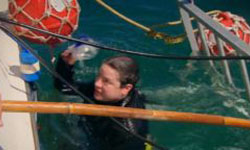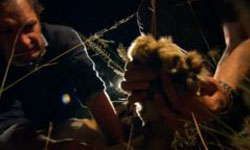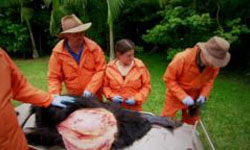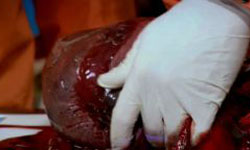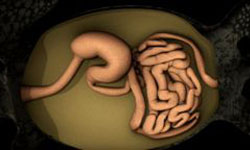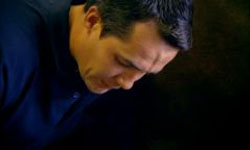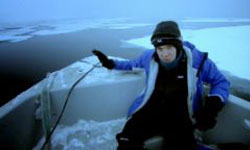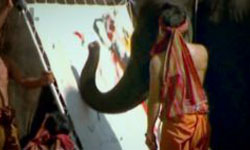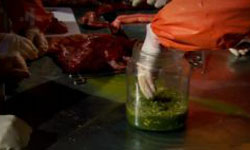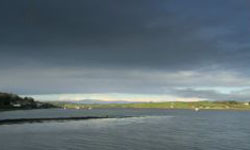The second run of the BAFTA Award-winning series reveals the anatomy of some of nature\'s most successful predators.The experts travel to South Africa to dissect a 900kg, 15-foot-long great white shark.
- Biology
- Medical Sciences
- No subtitles
- 50
The second run of the BAFTA Award-winning series reveals the anatomy of some of nature\'s most successful predators.The experts travel to South Africa to dissect a 900kg, 15-foot-long great white shark.
-
Inside Nature's Giants - Monster Python
-
Channel 4
The experts venture into the swamps of the Florida Everglades, where giant Burmese pythons are thriving.
- Biology
- No subtitles
- 50
The experts venture into the swamps of the Florida Everglades, where giant Burmese pythons are thriving.
-
Inside Nature's Giants - The Big Cats
-
Channel 4
The experts dissect a lion and a tiger, and travel to South Africa to see lions in the wild.
- Biology
- No subtitles
- 50
The experts dissect a lion and a tiger, and travel to South Africa to see lions in the wild.
The Bafta-winning series returns to Australia on the trail of a bird that\'s been described as a living dinosaur. The cassowary hides in Queensland\'s tropical rainforests.
- Biology
- No subtitles
- 47
The Bafta-winning series returns to Australia on the trail of a bird that\'s been described as a living dinosaur. The cassowary hides in Queensland\'s tropical rainforests.
-
Inside Nature's Giants - The Giraffe
-
Channel 4
Creationists question how this extraordinary creature could have evolved such a long neck, but for evolutionary biologist Professor Richard Dawkins the anatomy of the world's tallest animal provides some of the best arguments in favour of Darwinian natural selection.
- Biology
- No subtitles
- 60
Creationists question how this extraordinary creature could have evolved such a long neck, but for evolutionary biologist Professor Richard Dawkins the anatomy of the world's tallest animal provides some of the best arguments in favour of Darwinian natural selection.
The team travel to Florida to dissect the ocean's largest reptile - the leatherback turtle. They uncover the evolutionary mystery of how turtles developed shells to protect themselves from some of the sharpest-toothed predators on the planet.
- Biology
- English subtitles
- 47
The team travel to Florida to dissect the ocean's largest reptile - the leatherback turtle. They uncover the evolutionary mystery of how turtles developed shells to protect themselves from some of the sharpest-toothed predators on the planet.
-
Inside Nature's Giants - The Racehorse
-
Channel 4
The team explore how this animal has been biologically engineered for speed. They dissect an elite racehorse to reveal the extraordinary spring system that propels it to 45mph, its super-sized organs and built-in turbo-booster.
- Biology
- Medical Sciences
- No subtitles
- 50
The team explore how this animal has been biologically engineered for speed. They dissect an elite racehorse to reveal the extraordinary spring system that propels it to 45mph, its super-sized organs and built-in turbo-booster.
-
Inside Nature's Giants: Polar Bear
-
Channel 4
The team join Inuit hunters and scientists studying polar bears off the coast of Greenland. Polar bears have become a symbol of climate change as their habitat is threatened. And, at the top of the food chain, they are especially vulnerable to physiological side effects from man-made pollutants.
- Biology
- Environmental Studies
- English subtitles
- 62
The team join Inuit hunters and scientists studying polar bears off the coast of Greenland. Polar bears have become a symbol of climate change as their habitat is threatened. And, at the top of the food chain, they are especially vulnerable to physiological side effects from man-made pollutants.
-
Inside Natures Giants - Elephant
-
Channel 4
This programme looks at how evolution has overcome the challenges of being as big as an elephant.
- Biology
- Environmental Studies
- No subtitles
- 48
This programme looks at how evolution has overcome the challenges of being as big as an elephant.
-
Inside Natures Giants - The Crocodile
-
Channel 4
Veterinary scientist Mark Evans joins experts in anatomy, evolution and behaviour in a bid to get under the skin of the crocodile.
- Biology
- Medical Sciences
- No subtitles
- 30
Veterinary scientist Mark Evans joins experts in anatomy, evolution and behaviour in a bid to get under the skin of the crocodile.
-
Inside Natures Giants - The Whale
-
Channel 4
In this episode experts dissect a 65-foot, 60-ton fin whale - second only in size to its \'cousin\' the blue whale - that has died after being stranded off the coast of Ireland. It\'s a race against time as whale anatomist Joy Reidenberg flies in from New York before the animal\'s decomposition causes it to explode on the beach.
- Biology
- No subtitles
- 48
In this episode experts dissect a 65-foot, 60-ton fin whale - second only in size to its \'cousin\' the blue whale - that has died after being stranded off the coast of Ireland. It\'s a race against time as whale anatomist Joy Reidenberg flies in from New York before the animal\'s decomposition causes it to explode on the beach.

